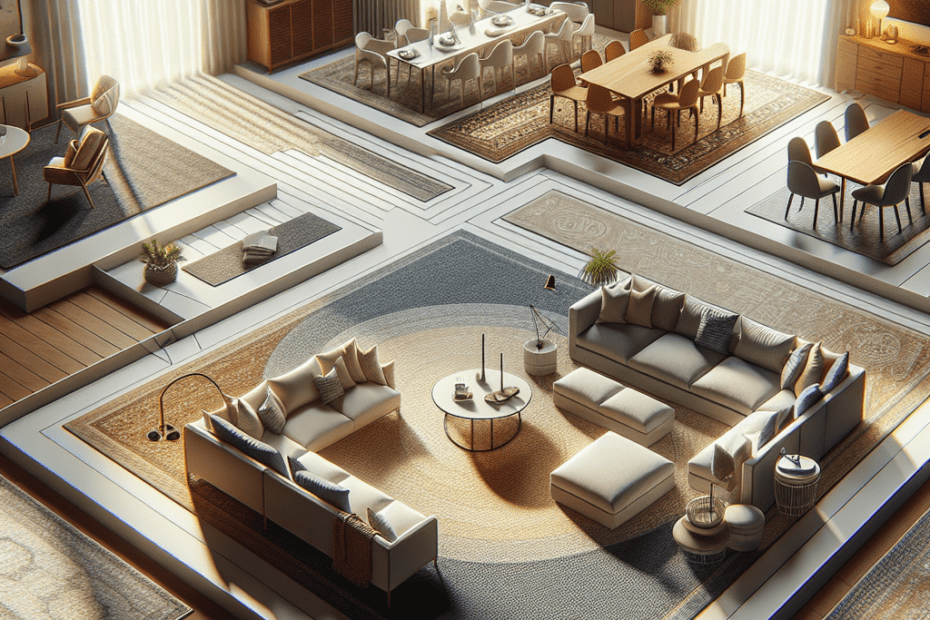The Role of Area Rugs in Defining Room Layouts
From trendy apartments in bustling cities to cozy homes in quiet suburbs, many individuals and families are finding creative ways to use area rugs in room design. These versatile pieces not only add warmth and texture to a space but also define and enhance the layout of a room. In this blog post, they will explore how area rugs can serve as a foundational piece in room design, providing practical tips and insights on their usage.
Why Area Rugs Matter in Room Design
Area rugs play a significant role in defining room layouts. By creating visual boundaries, they can organize open floor plans, offer grounding for furniture arrangements, and add an aesthetic touch to any environment. When carefully selected, area rugs contribute to a room’s symmetry, make spaces feel more inviting, and highlight key design elements.
Statistics on Area Rug Usage
According to a report by Statista, the global area rug market size was valued at approximately $4 billion in 2022 with a projected growth rate of 5% annually. Many homeowners invest in area rugs for their practicality, comfort, and ability to transform spaces. A survey conducted by Houzz found that 67% of respondents consider rugs an essential feature of their interior design plans, emphasizing their growing popularity in room layouts.
How Area Rugs Define Room Layouts
- Creating Zones: In rooms that serve multiple functions, they are using area rugs to carve out distinct zones. For example, in an open-concept living area, a rug can define a cozy space for relaxing, while another can designate the dining area.
- Anchoring Furniture: They find that placing furniture entirely or partially on an area rug can anchor the pieces and keep everything cohesive. A rug that extends under a sofa and coffee table can bring the seating arrangement together.
- Adding Layers: Layering rugs can be an effective technique for enhancing textures and colors in a room. They often use this strategy to add depth and interest.
- Defining Pathways: In smaller rooms or hallways, narrow runners can guide traffic flow and prevent the space from feeling too cluttered.
| Function | Description | Example |
|---|---|---|
| Creating Zones | Defining different areas in open spaces. | Living and dining areas in a loft. |
| Anchoring Furniture | Bringing a furniture arrangement together. | Sofa and coffee table grouping. |
| Layering | Adding depth and texture. | A large natural fiber rug with a colorful overlay. |
| Defining Pathways | Guiding traffic flow. | Runner in a hallway. |
Choosing the Right Area Rug Size
The size of the area rug is crucial for its functionality and aesthetics. They recommend measuring the space and considering furniture arrangement before selecting a rug. In a living room, a common guideline is to choose a rug large enough to fit under the front legs of all seating, providing a unified look.
Colors and Patterns: Making a Statement
Apart from size and placement, colors and patterns must align with the room’s existing decor or desired theme. They often select bold patterns or vibrant colors to make a statement, while neutral tones can offer a calming effect. Additionally, patterned rugs can disguise wear and dirt in high-traffic areas.
When they align the rug’s color palette with that of the room, they enhance the overall harmony of the space, bringing eclectic elements into a coherent vision. It’s about creating a seamless flow that contributes to the atmosphere they wish to evoke.
Key Takeaways
- Area rugs define and enhance room layouts by creating zones, anchoring furniture, and guiding pathways.
- The global area rug market is projected to grow 5% annually, highlighting their increasing popularity.
- Choosing the right size, color, and pattern is essential for achieving the desired effect in a room’s design.
FAQ
- 1. How do area rugs help in defining room layouts?
- Area rugs create visual boundaries, organize open spaces, anchor furniture arrangements, and guide traffic flow, helping to define and enhance room layouts.
- 2. What are the current trends in area rug design?
- Current trends include layering rugs, using bold patterns and colors to make a statement, and opting for sustainable materials.
- 3. How do I choose the right size rug for my room?
- Measure your space and consider furniture arrangement. A common guideline is that an area rug should be large enough to fit under the front legs of major furniture pieces.
- 4. What types of materials are best for area rugs?
- Wool, cotton, jute, and synthetic fibers like polypropylene are popular materials. The choice depends on the desired texture, durability, and maintenance needs.
- 5. Can area rugs be used in high-traffic areas?
- Yes, especially those made from durable materials. Patterned rugs can also help disguise wear and dirt in high-traffic areas.
Overall, area rugs are invaluable in room designs for both their functional and aesthetic contributions. By carefully selecting the right rug, they can significantly influence the feel and flow of a room, making spaces more cohesive and inviting.
